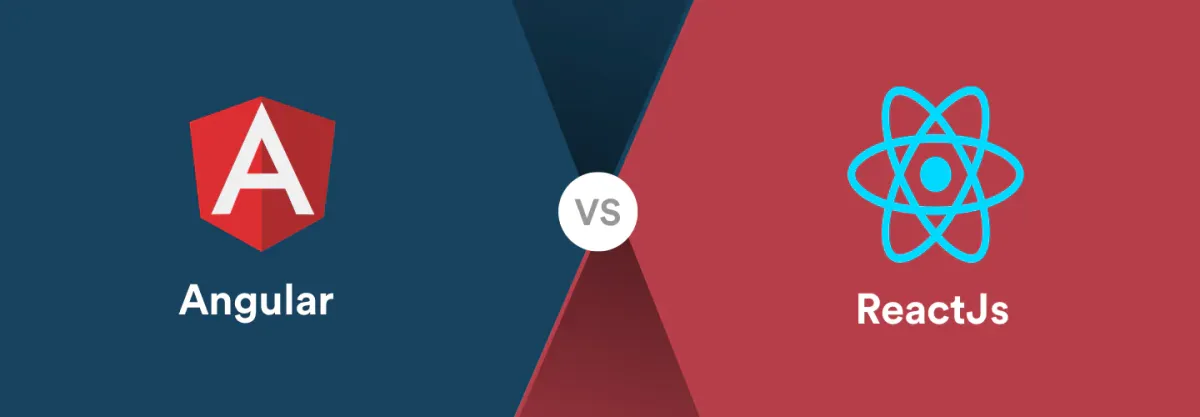Comparative Analysis: Angular vs. React for Front-End Development

In the ever-evolving landscape of front-end development, choosing the right framework is crucial for building robust, scalable, and maintainable web applications. Among the myriad of options available, Angular and React stand out as two of the most popular choices. Both offer powerful features and extensive ecosystems, but they also have distinct differences that can significantly impact your development experience and project outcomes. In this comparative analysis, we'll dive into the key differences between Angular and React across various aspects to help you make an informed decision.
Architecture:
Angular: Developed and maintained by Google, Angular is a comprehensive MVC (Model-View-Controller) framework that provides a structured approach to building single-page applications (SPAs). It offers built-in solutions for routing, dependency injection, forms handling, and state management, promoting a "batteries-included" philosophy.
React: Created by Facebook, React is a JavaScript library focused solely on the "View" layer of the MVC architecture. It utilizes a component-based approach, where UIs are broken down into reusable components that manage their state independently. React's lightweight core encourages flexibility and enables developers to integrate it seamlessly with other libraries and frameworks.

Performance:
Angular: Angular's two-way data binding and extensive feature set can sometimes lead to performance overhead, especially in larger applications. However, recent versions have introduced improvements like Ivy renderer and Ahead-of-Time (AOT) compilation, which have significantly enhanced performance.
React: React's virtual DOM and one-way data flow contribute to its exceptional performance, as it minimizes DOM manipulation and efficiently updates only the components that have changed. This approach makes React well-suited for building highly interactive and responsive applications, even at scale.
Community Support:
Angular: With the backing of Google and a dedicated community of developers, Angular boasts comprehensive documentation, extensive tutorials, and a vast ecosystem of third-party libraries and tools. Regular updates and long-term support (LTS) ensure that Angular remains relevant and well-maintained.
React: React's popularity has led to a thriving community of developers who contribute to its ecosystem through libraries, tools, and resources. The React team prioritizes developer experience, regularly releasing updates, and providing excellent documentation and official resources to support developers.
Learning Curve:
Angular: Due to its opinionated nature and comprehensive feature set, Angular has a steeper learning curve compared to React. Developers need to grasp concepts like TypeScript, Angular CLI, RxJS for reactive programming, and Angular's component-based architecture. However, once mastered, Angular offers a robust framework for building complex applications.
React: React's minimalist approach and focus on JavaScript make it more accessible to developers, particularly those familiar with ES6 syntax and functional programming concepts. Its component-based structure and unidirectional data flow are relatively straightforward to understand, making it easier for beginners to get started with React development.
Suitability for Different Project Types:
Angular: Angular is well-suited for large-scale enterprise applications with complex requirements, thanks to its opinionated architecture, built-in tools for testing and debugging, and comprehensive feature set. It provides a structured environment for teams working on collaborative projects and offers features like Angular Universal for server-side rendering, making it suitable for SEO-friendly applications.
React: React's lightweight and flexible nature make it ideal for building dynamic and interactive user interfaces, especially in applications with frequently changing data or UI components. Its component-based architecture facilitates code reusability and maintainability, making React a popular choice for startups, small to medium-sized projects, and applications requiring high performance and responsiveness.
Conclusion:
In conclusion, both Angular and React have their strengths and weaknesses, making them suitable for different types of projects and development scenarios. Angular excels in large-scale enterprise applications that require a structured framework with built-in solutions for complex requirements. On the other hand, React shines in building dynamic, interactive user interfaces with a lightweight and flexible approach.
Ultimately, the choice between Angular and React depends on factors such as project requirements, team expertise, scalability needs, and development preferences. By understanding the differences outlined in this analysis, developers can make an informed decision that aligns with their specific use case and goals, ensuring a successful outcome for their front-end development endeavors.
